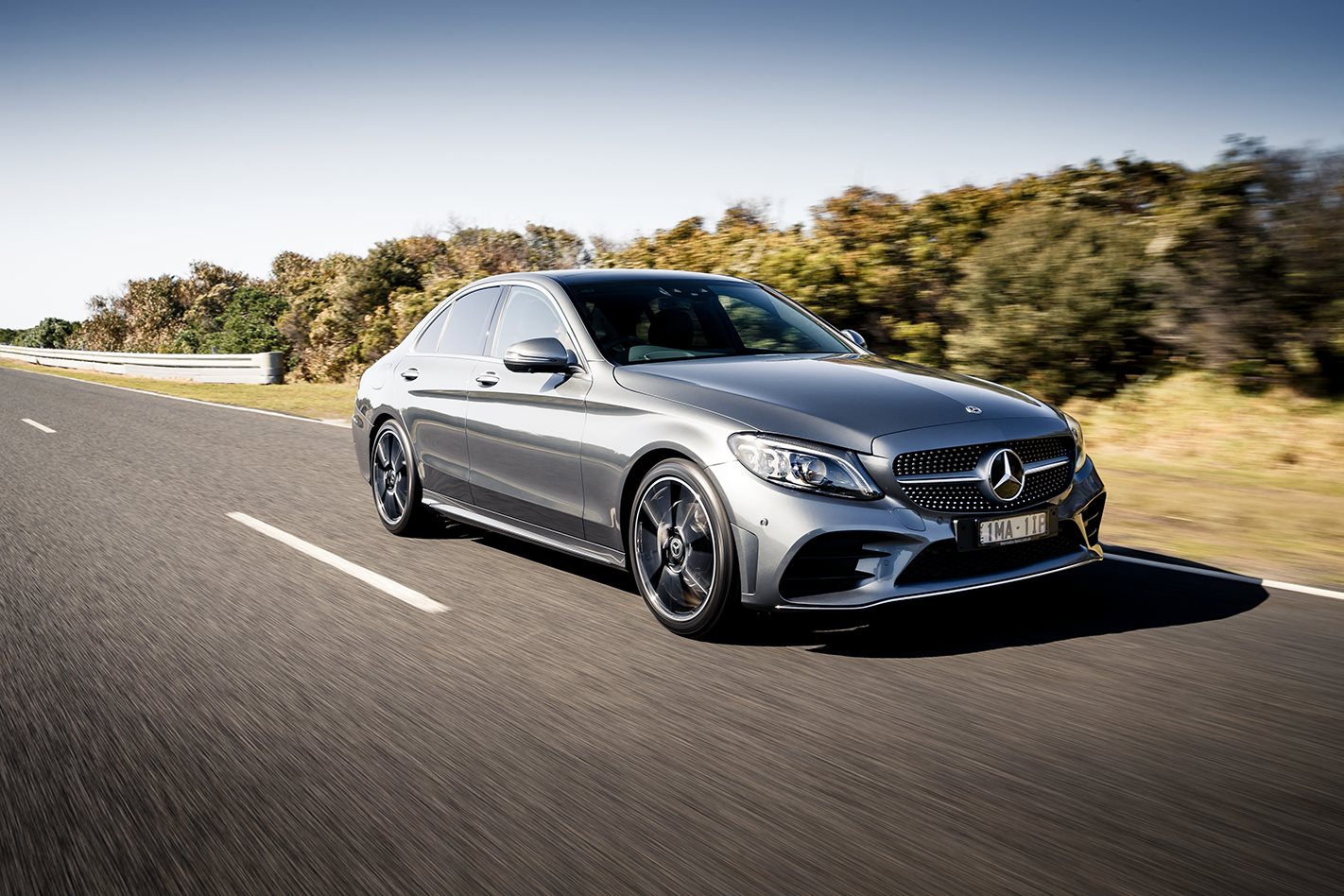
Score breakdown
Things we like
- Great handling
- Superb powetrains
- Lovely cabin
Not so much
- Short rear seat base
What stands out?
The Mercedes-Benz C-Class is a luxury medium sedan and wagon with a compelling set of abilities. The C-Class is handsome and comfortable, has great road manners, and is built to a high standard. Every C-Class is also fuel-efficient, pleasingly potent, and safe, and comes with autonomous emergency braking and other advanced driver aids.The current model is a significantly modified version of the W205 Mercedes-Benz C-Class, which first arrived in the middle of 2014.
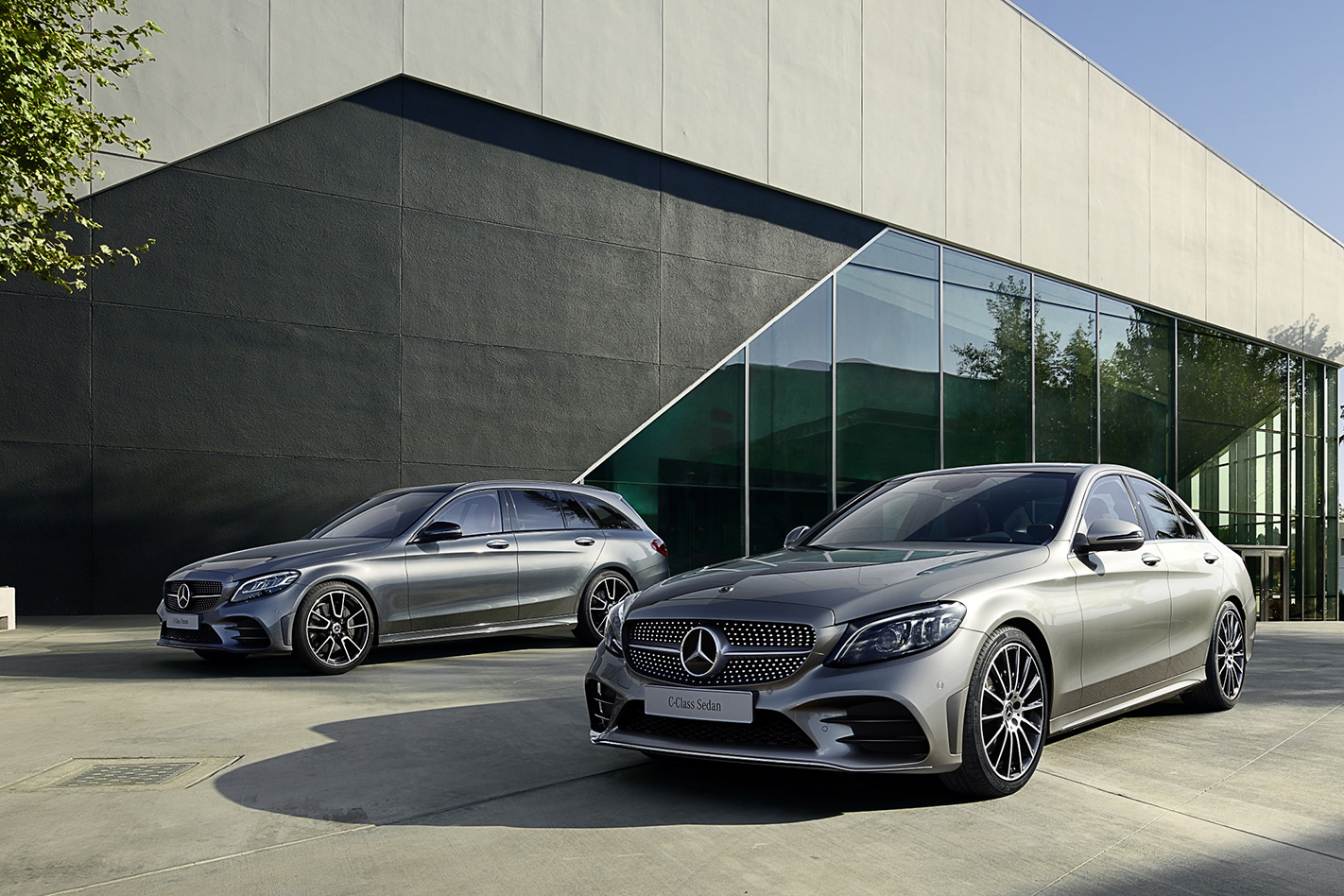
What might bug me?
Wishing you had a spare wheel and tyre. If you puncture a tyre on a C-Class car, you just keep driving: its tyres will still work when they’re flat. That’s great, provided you can get a new tyre fitted soon. Once it has lost air, a run-flat tyre will last for about 80km.That near neighbours also drive C-Classes. The Mercedes-Benz C-Class has become a very popular luxury car (with good reason) and is the third biggest-selling medium car in Australia after the Toyota Camry and BMW 3 Series.
What body styles are there?
Four-door sedan and five-door station wagon (called the Estate) plus sporty-looking coupe and a cabriolet versions.
There are also high performance Mercedes-AMG variants but this review does not cover those carsThe Mercedes-Benz C-Class drives its rear wheels and is classed as a medium car, higher priced.
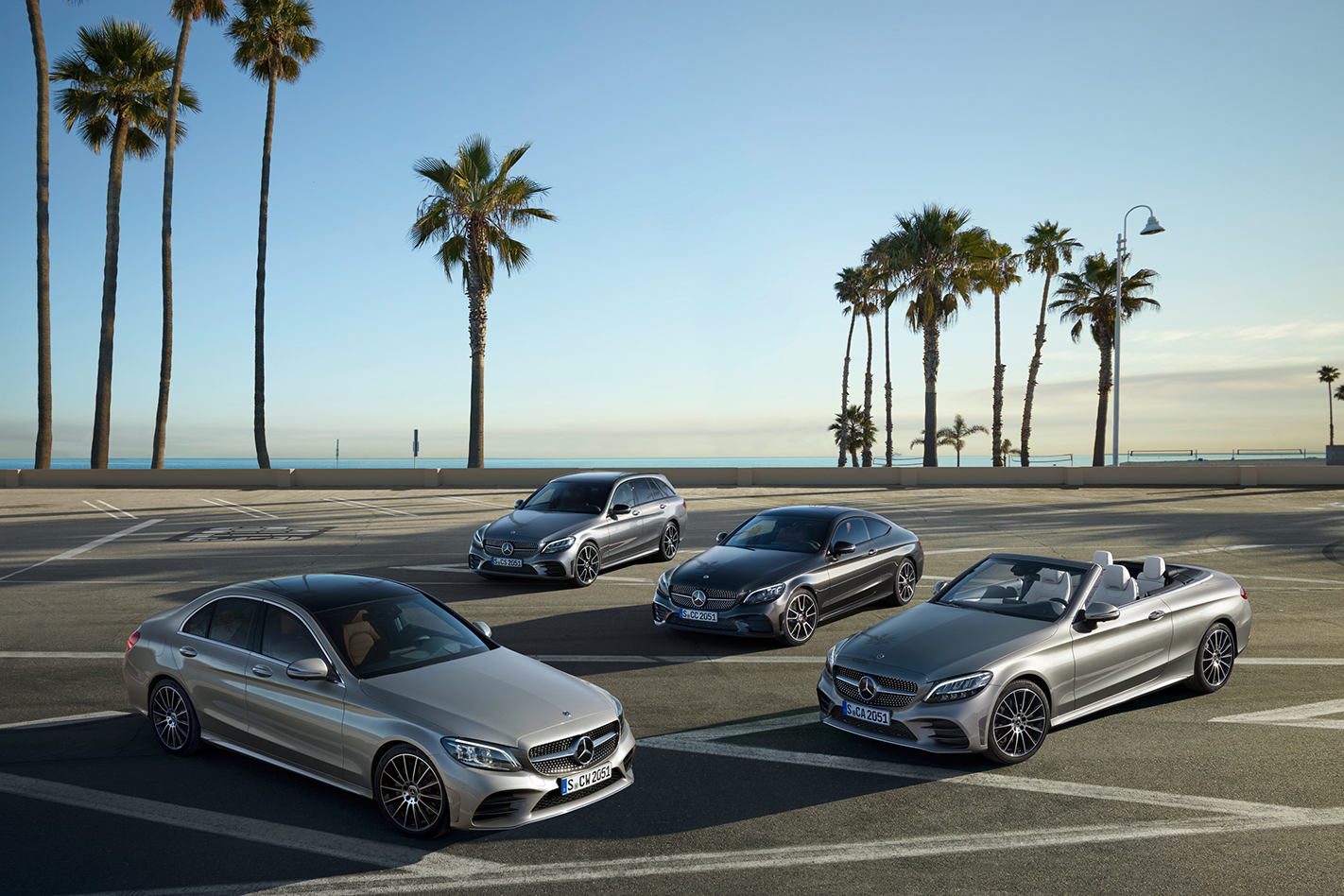
What features do all C-Class Mercedes have?
- Dual-zone climate control, which lets you set different temperatures for the driver and passenger side of the cabin.
- A reversing camera.
- Front and rear parking sensors.
- Active parking assist, which can steer the car into a parking spot.
- A multimedia system with CD player, AM/FM and digital radio tuning, satellite navigation, touchpad control, and a 10.25-inch colour screen interface.
- Bluetooth connectivity for phone calls and audio streaming, and Apple CarPlay/Android Auto smartphone integration.
- 12.3-inch digital instrument display.
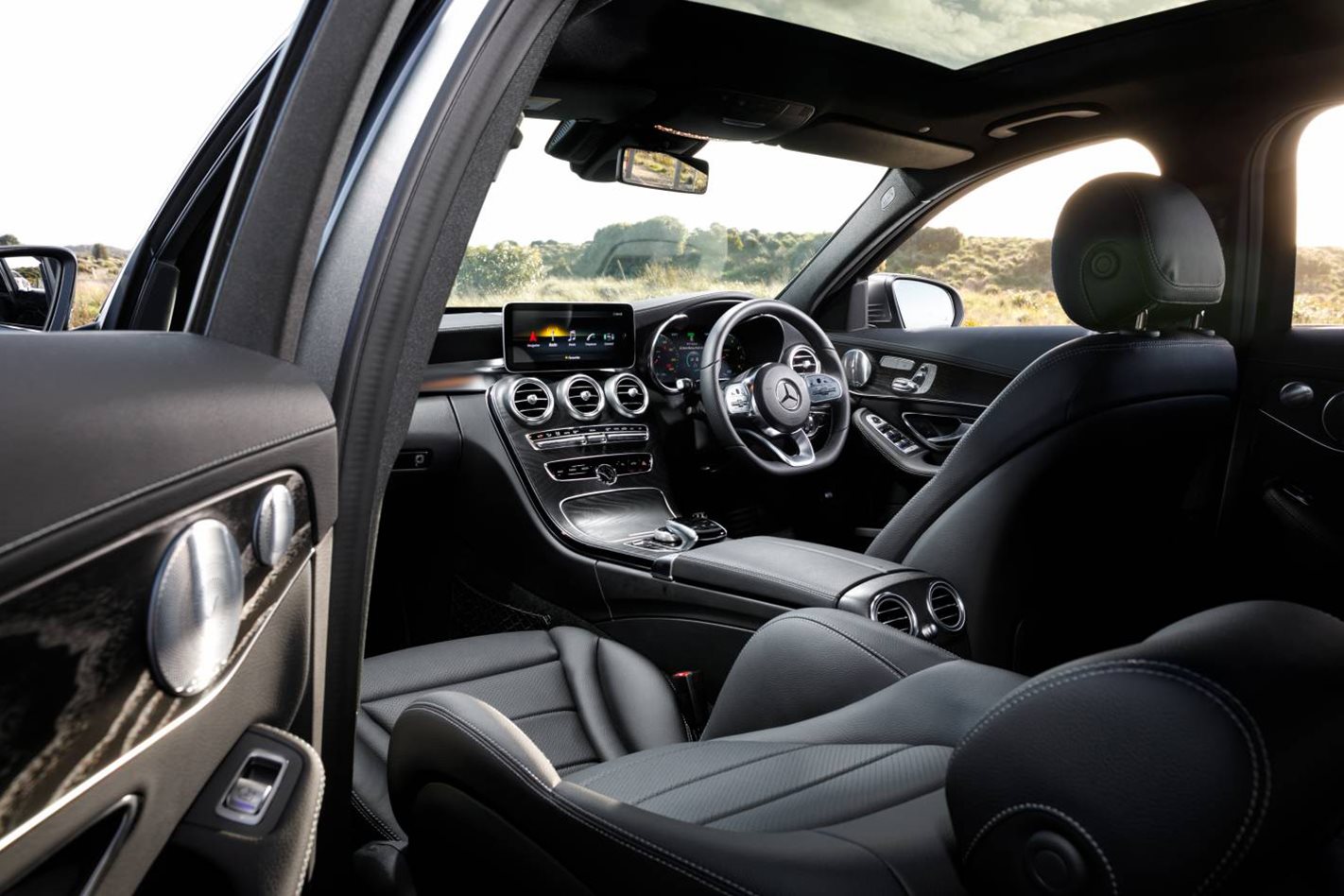
- Power-adjusted front seats.
- Nappa-leather trimmed multi-function steering wheel with paddle gear shifters.
- Automatic dimming rear-view mirror.
- Power-folding, heated door mirrors.
- Keyless start.
- Very bright, long-lasting LED headlamps that turn on automatically when it’s getting dark.
- Windscreen wipers that operate automatically when it rains.
- Agility Control suspension, which automatically makes the car ride more comfortably when you are cruising, and more firmly if you are working it hard.
- Agility Select, which lets you adjust the ride comfort yourself – and also to choose whether the car accelerates and steers sharply or lazily.
- Aluminium alloy wheels fitted with run-flat tyres (there is no spare wheel or tyre inflation kit). A tyre pressure warning system, which tells you if a tyre is going flat.
- On Estate (wagon) versions, a power operated tailgate and aluminium roof rails.
- An active safety suite that includes autonomous emergency braking and blind spot monitoring.
- Nine airbags. Electronic stability control, which can help you control a skidding car. (For airbag placement and more on C-Class safety systems, please open the Safety section below.)
- Every Mercedes-Benz C-Class carries a five-year, unlimited kilometre warranty.
Which engine uses least fuel, and why wouldn’t I choose it?
In a C-Class you can choose from a plug-in hybrid (PHEV) and two four-cylinder petrol engines that all offer satisfying thrust for normal driving.Of the three powertrains, the C300e PHEV is the most efficient, with a combined fuel economy rating as low as 2.1L/100km.
Only available as a sedan, the C300e sedan utilises Benz’s third generation of its EQ hybrid technology and has a strong 90kW electric motor that propels it for up to 55km on battery power alone. The motor also combines with the 2.0-litre, four-cylinder petrol engine to produce up to 235kW/700Nm through the back wheels via the nine-speed automatic transmission. That means it’s quick off the mark and can sprint from 0 to 100km/h in just 5.4 seconds.
One reason you would not choose the C300e is because like any PHEV you lose all efficiency gains if you’re unable to keep the battery topped up. The low fuel economy is dependent on you setting off with a full battery and driving in full electric mode until the batteries run out of juice. By driving without charging the battery, which adds weight to the car, you’ll find you may use more fuel than the petrol versions.
Another reason is you may want an wagon, coupe or cabriolet versions that only come with the two petrol engines, which include 1.5-litre in the C200 and the 2.0-litre turbo in the C300, which both have four cylinders.
The C200 uses 7.0 litres/100km on the official test in the Sedan and Coupe versions, 7.4 litres/100km in the Estate and 7.6 litres/100km in the heavier Cabriolet.
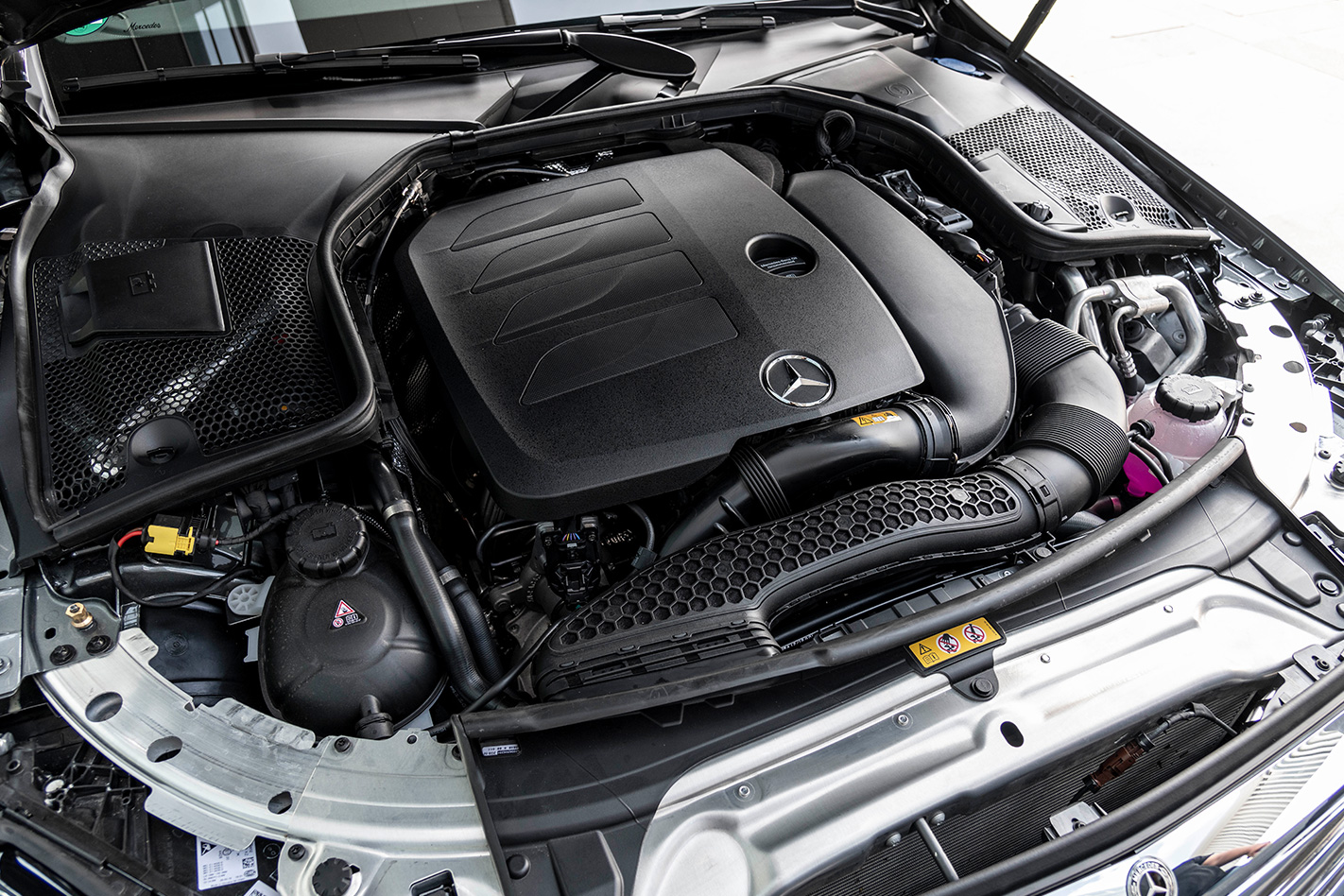
What key features do I get if I spend more?
The least costly of the Mercedes-Benz C-Class cars, the C200 have Artico fake-leather seat-trim, 18-inch wheels, and the features on every C-Class.
The Estate, Coupe and Cabriolet versions cost considerably more than the sedan, with the Coupe and Cabriolet bringing some extras such as an AMG Line exterior and interior trim, Adaptive High beam Assist and 360-degree parking camera.
Spending more for a C300 brings you the more powerful turbo petrol engine described above and some extra equipment, including:
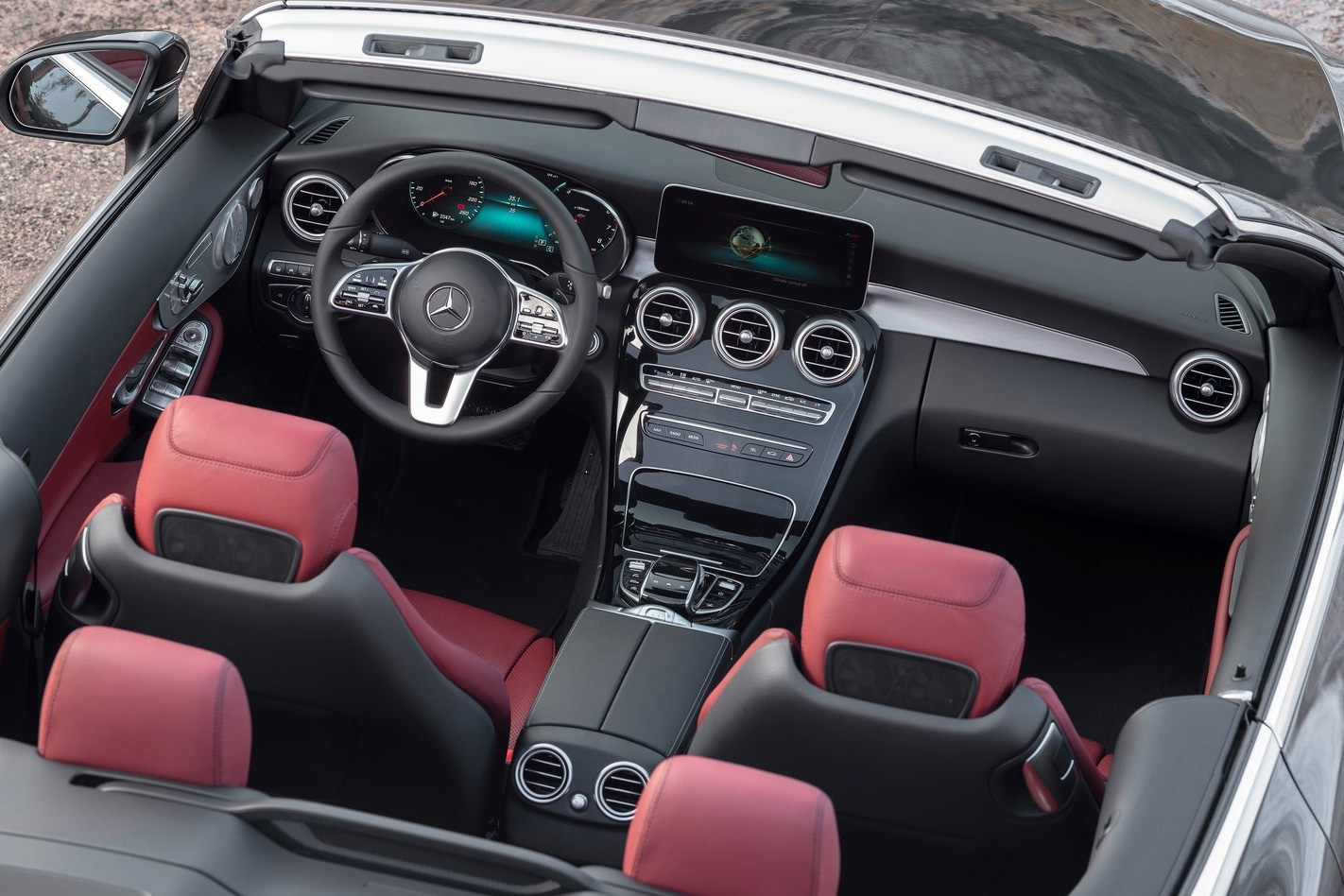
- Real leather upholstery.
- Tinted glass protecting the rear compartment.
- Keyless entry that lets you unlock the car by merely grabbing a door handle – provided your key is nearby, say in a bag or pocket.
- Sedans gain a power-opening boot like the wagon, with hands-free sweeping foot gesture below the rear bumper.
- 13-spealer 570W premium sound system.
- COMAND Infotainment system with high-resolution media screen, fast hard-disc navigation with 3D map display and voice command.
- Wheel diameter rises to 19 inches and the tyre profile is correspondingly lower, which sharpens steering response slightly.
The C300 and C300e also gain a big suite of active driving aids under the title Driver Assistance Package Plus.
This includes a sophisticated adaptive cruise control, which not only adjusts your speed to match vehicles in front of you on the highway but also holds your place in stop-start traffic and automatically moves forward with the car in front. The auto braking becomes more powerful, and further features include lane-keeping assistance and a frontal cross-traffic alert.
Options
The Airmatic suspension is available on other C-Class cars as an extra-cost option. There are numerous other options, some of which come in packs.
These include:
- The C200 Sport Edition that lets you update your C200 Sedan, Estate or Coupe to have the adaptive cruise control, a head-up display projecting key driving information onto the windscreen, a panoramic sunroof, heated front seats with memory function, Adaptive Highbeam Assist (Sedan only, standard on Coupé), rear privacy glass, 19-inch AMG alloy wheels and the sporty AMG Line exterior package (standard on Coupé).• A Vision package brings a panoramic glass sunroof, adaptive high beam assist (which automatically dips the headlights when it detects other cars), a 360-degree parking camera, and a head-up display (which puts a speedometer in your line of sight).• A Comand package upgrades the multimedia system with a sharper high-resolution screen, faster satellite navigation with traffic sign assist, internet access, and a 13-system speaker surround sound-sound. Choosing this package for the C200 also brings the Driver Assistance Package Plus, which comes standard with the C300.• A Seat Comfort package brings a memory function for the driver’s seat and side mirrors, more powered adjustments for the headrest, seat cushion and steering wheel, and heaters for the front seats.• And an AMG Line package dresses up a Mercedes-Benz C-Class so that it looks and feels a bit like its higher-performing cousin the Mercedes-AMG C63 S, with sports seats, front and rear aprons on the body, and a flat-bottomed steering wheel, and 19-inch AMG design alloy wheels. The car rides lower, on firmer suspension, and variable-ratio steering allows relaxed response at straight-ahead but sharper response in bends.Alternative wheels and interior trims are offered for any C-Class car.
Does any upgrade have a down side?
Some of the AMG-line options reduce practicality and comfort in small ways. The sports suspension rides less comfortably, and its lower ride height and the AMG front apron makes it harder to negotiate steep driveways or speed humps without scraping the lower body.The big suite of active driving aids in the optional Driver Assistance package might feel overwhelming at first. After you get used to how they operate (which takes time), they are certainly worth having.
The C300e plug-in hybrid is only efficient if you’re able to regularly charge the battery.Metallic paint comes at an additional cost of about $1500. Of 11 colours available, only two of them – Black and Polar White – are non-metallic and come at no extra cost.
How comfortable is the Mercedes C-Class?
The Mercedes-Benz C-Class is a very comfortable car on its standard suspension, and it feels even better on the optional Airmatic suspension.The coil-sprung standard C-Class smooths out surface imperfections and larger bumps and stays composed. The optional air-sprung suspension smothers the impact of those same big bumps, while rounding off smaller intrusions.
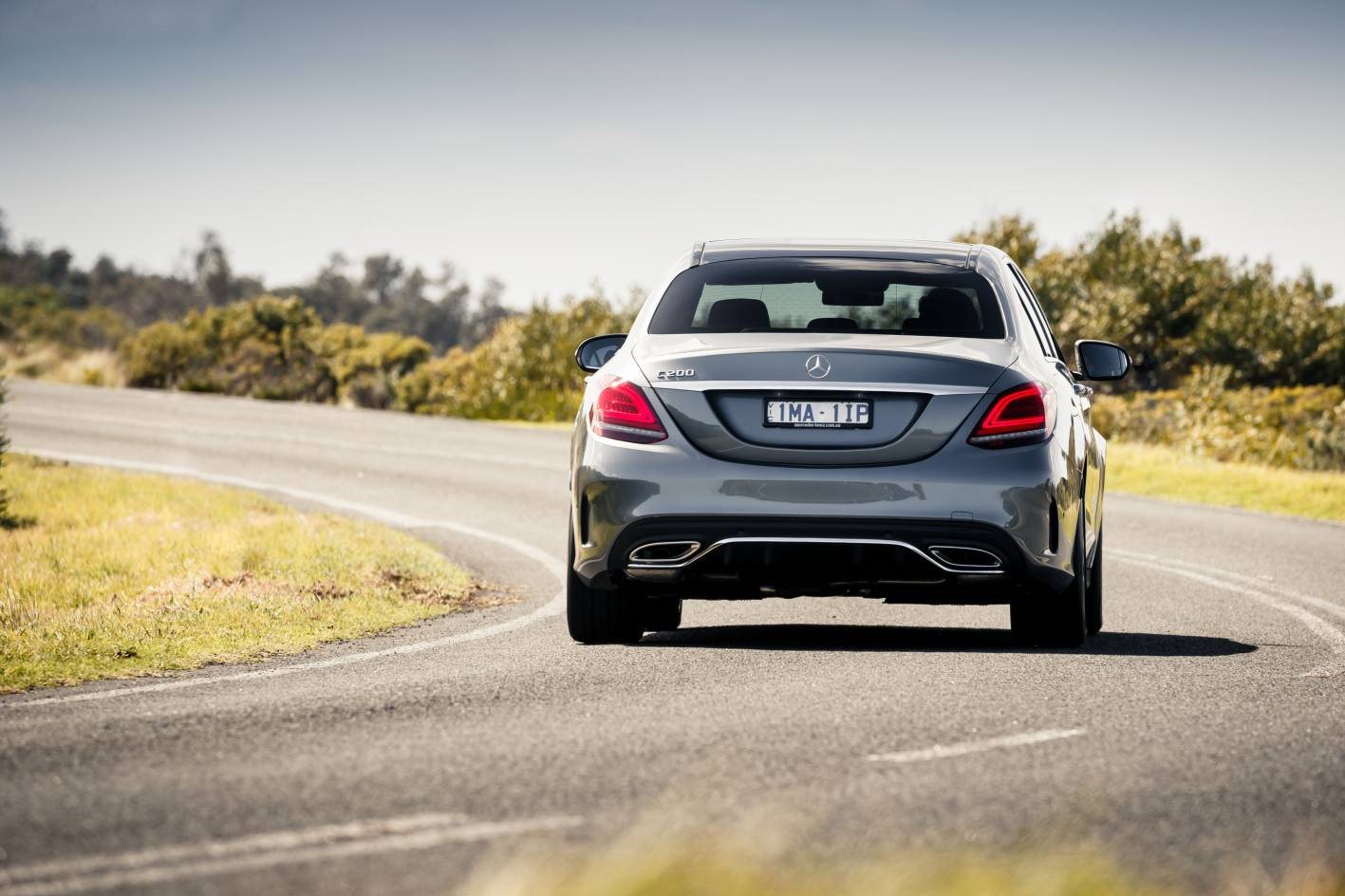
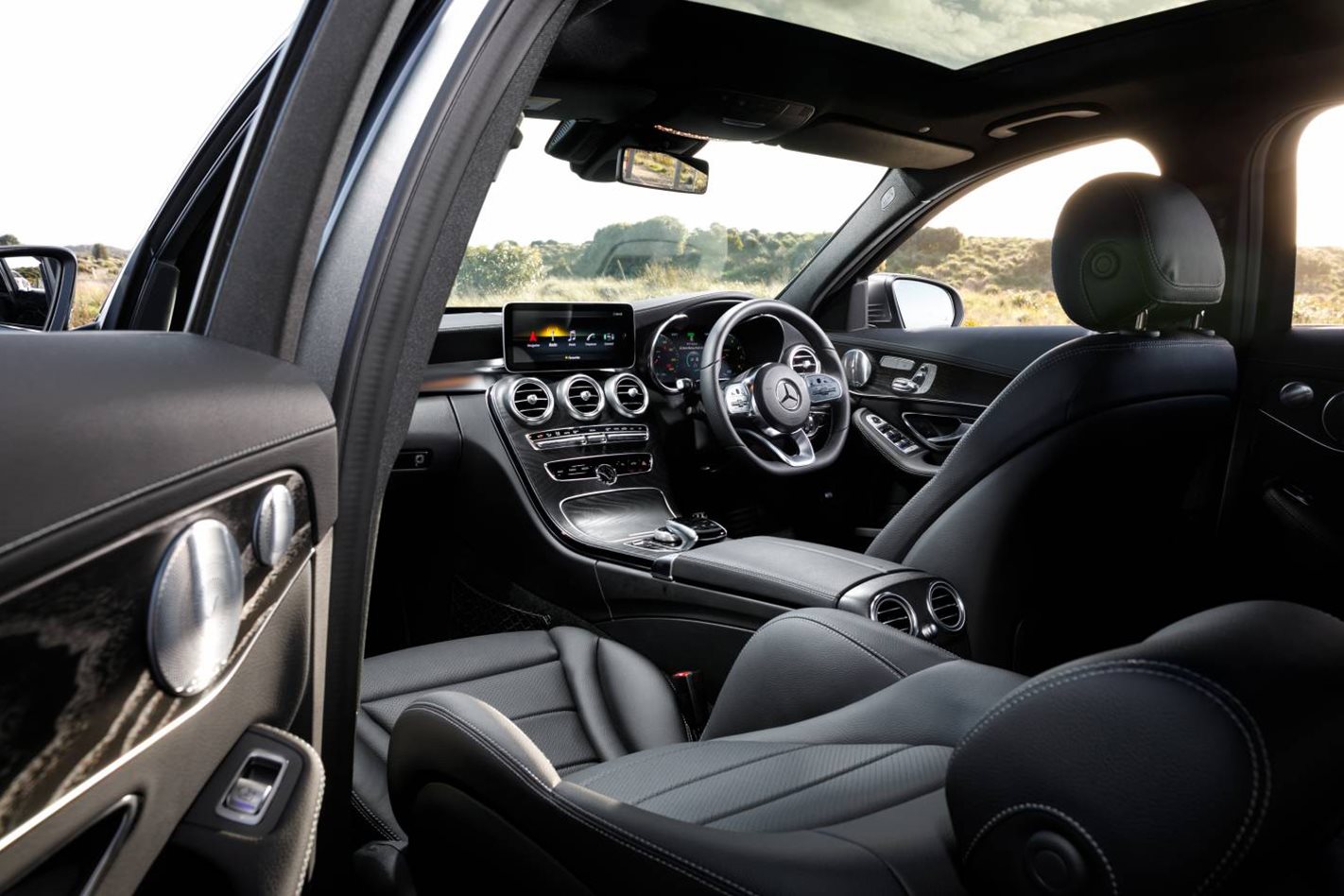
What about safety in a Mercedes C-Class?
The C-Class offers a lot of safety technology, and much of it is fitted even to the least costly models. You have stability control, nine airbags, a reversing camera, front and rear parking sensors, and auto headlights and wipers. The run-flat tyres help you maintain control should you get a puncture. And standard active safety functions include a driver fatigue monitor, blind-spot assistance and auto-braking.Two of the nine airbags are placed directly in front of the driver and front passenger, and there is also a knee airbag for the driver. Outer front and rear occupants also have a side-airbag each, protecting the pelvis and chest from side impacts. And side-curtain airbags protect front and rear occupants at head level from side impacts.Of the active safety systems, the fatigue monitor – Mercedes calls it Attention Assist – warns you if you show signs of falling asleep at the wheel, and Blind Spot Assist warns you when changing lanes if a vehicle is adjacent but not showing up in your external mirrors.The standard autonomous emergency braking works at low and high speeds. It warns of an obstacle in front of the car – typically a slower vehicle – and will apply the brakes if you do not react. (On the C200 it will not apply maximum braking, however.) A related system tells you if you are tailgating – or simply failing to leave enough room ahead for the speed you are going.Spending more to step from the C200 into the C300 and C300e brings you more active safety equipment, under the description Driver Assistance Package Plus.
Among its many features are active lane-keeping assistance, which seeks gently to correct you if you are drifting out of your lane on the highway (perhaps from distraction), and blind-spot assistance, which adds corrective steering action to the passive blind-spot alert. There is a more sophisticated auto-braking system, which recognises pedestrians and can apply maximum braking at suburban speeds. And a frontal cross-traffic assist checks at intersections for crossing cars that you may not have noticed.When ‘DISTRONIC’ adaptive cruise control is engaged in stop-start traffic and when fitted with the Comand package, it is now possible for the vehicle to be stationary for up to 30 seconds before moving off automatically.The Australasian New Car Assessment Program (ANCAP) awarded the Mercedes-Benz C-Class its maximum five stars for safety, in July 2014. The rating applies still to cars currently on sale, which are considerably more advanced.
I like driving – will I enjoy this car?
You will enjoy driving the Mercedes-Benz C-Class – it strikes a compelling balance between handling capability and overall comfort.A traditional rival for the Mercedes C-Class is the BMW 3 Series, which is a bit more involving to drive quickly through corners, thanks to crisp steering and more tautly controlled suspension.
Compared with the BMW, the Mercedes’ suspension is a bit softer and its steering feels a bit lighter, not quite matching the 3 Series’ intimate sense of connection with the road.
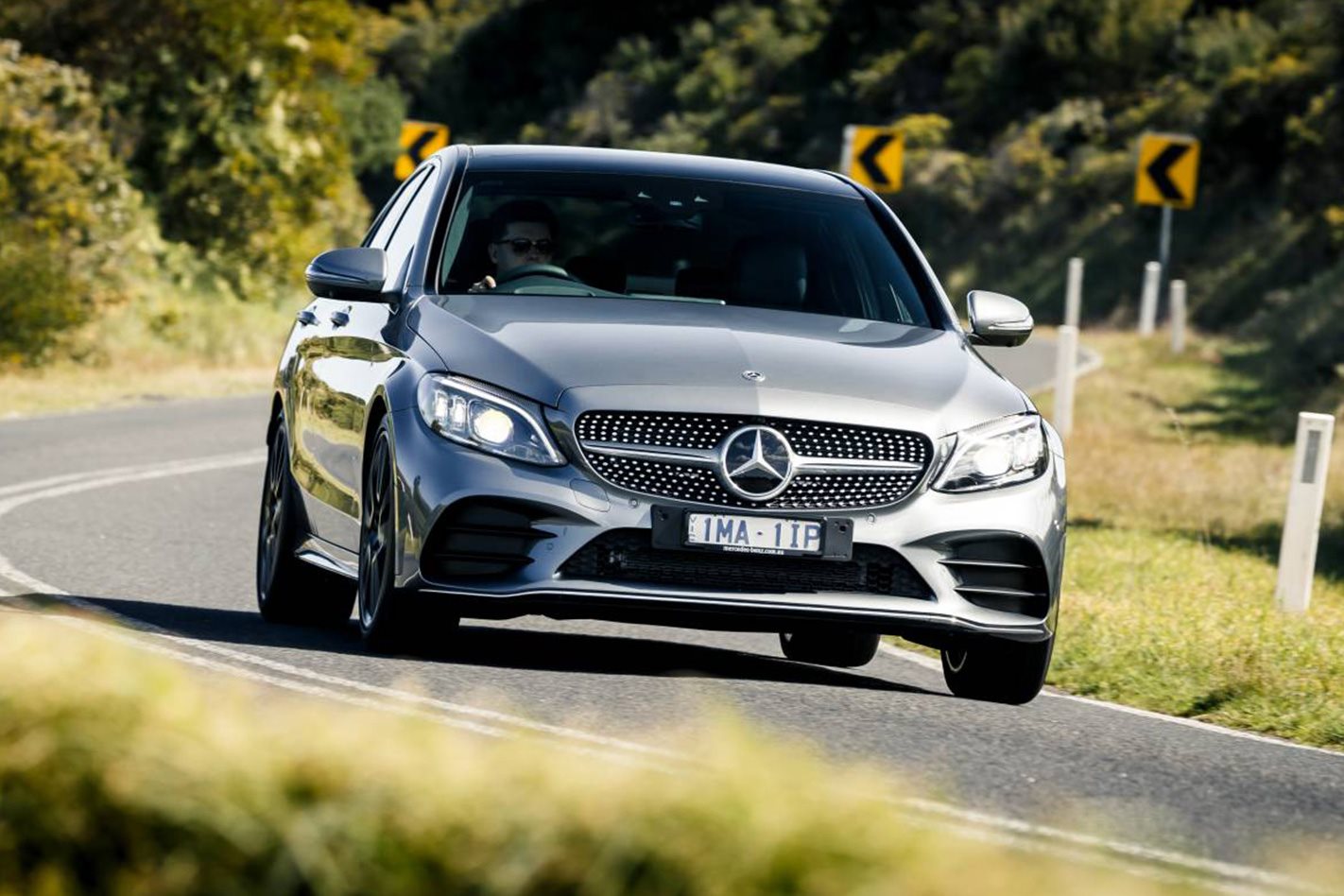
The more expensive C300 feels very swift and is a great package for those who relish a blast along a backroad. It pulls strongly across its rev range and spins cleanly, working its way into a powerful crescendo above 5000rpm if you keep your foot planted.All C-Class cars have paddle shifters, which give you manual control over gear selection for sporty driving.There’s also an Agility Select switch, which allows you to adjust various parameters, including the weight of the steering, the sensitivity of the throttle and how aggressively the gearbox shifts. The additional steering weight of the Sport modes works nicely on twisty roads, as does the additional throttle sensitivity that means you don’t have to push the accelerator as hard to achieve the same response.
How is life in the rear seats?
The rear seat area in the C-Class Sedan and Estate is spacious and as richly trimmed as the front compartment. However, it is let down by a short seat-base that compromises comfort.
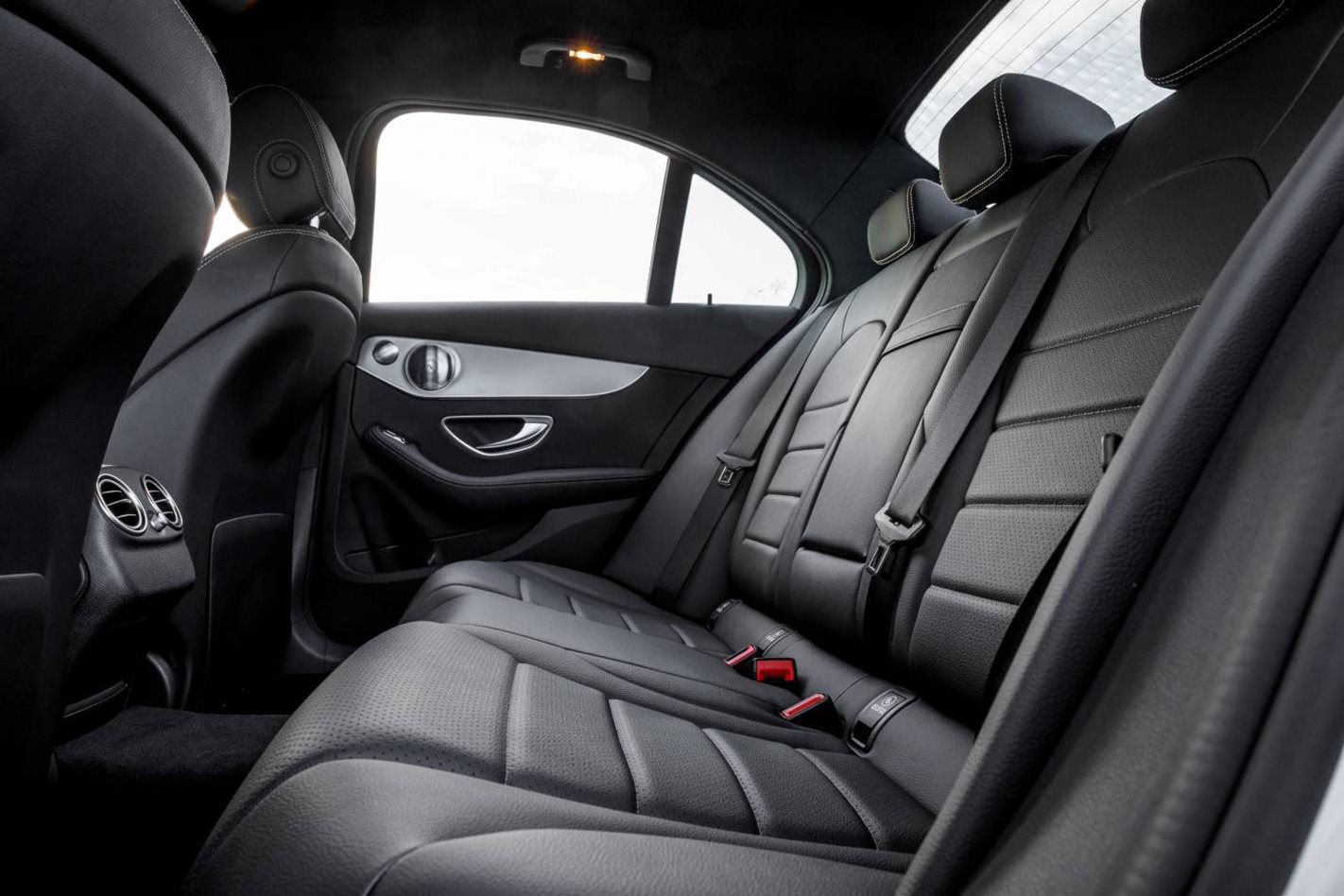
In other ways, the rear compartment is as thoughtfully designed as the rest of the car. There is a centre armrest with twin cupholders, rear air-conditioning outlets, and handy 40-20-40 folding backrests.
Rear seat space, legroom and headroom in the coupe and cabriolet versions are considerably tighter, especially if you’re shoehorning taller adults in – and there are only two seats in the back.
How is it for carrying stuff?
The C-Class sedan has a 480-litre boot – about as much space as you will find in key alternatives.
C-Class wagons offer 490 litres of luggage capacity, but that can expand to 1510 litres if the rear seatbacks are folded flat.
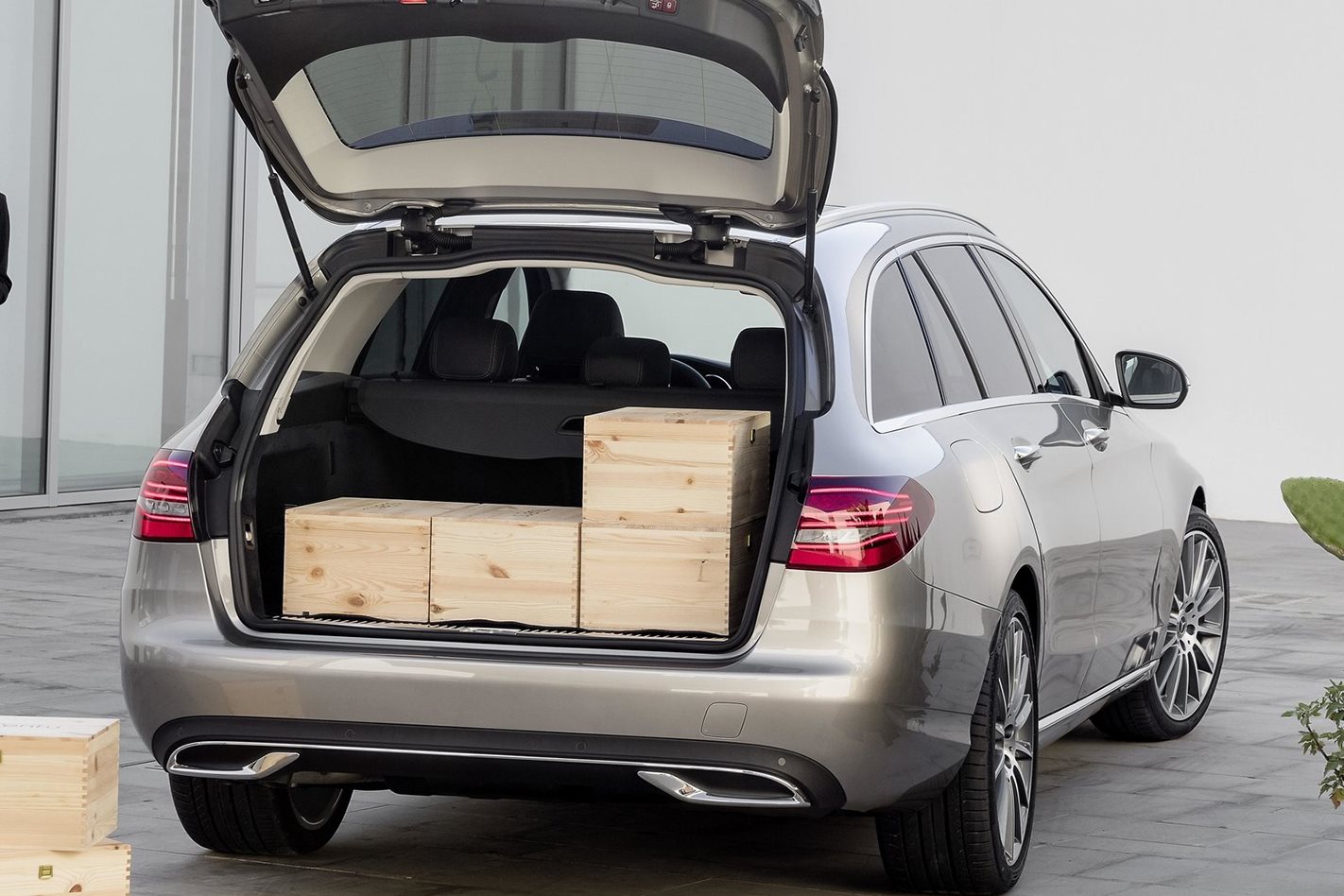
The Coupe has a shallower 360-litre boot, and the cabriolet just 260-litres as it has to accommodate the folding roof.
Where does Mercedes make the C-Class?
Most Mercedes-Benz C-Class sedans are made in South Africa. The C-Class Estates, Coupes and Cabriolets imported to Australia are made in Germany.
What might I miss that similar cars have?
All-wheel drive, which provides better traction in the wet and is handy when travelling to the ski fields. This is available with an Audi A4.Among other cars worth considering are the BMW 3 Series, Jaguar XE, Alfa Romeo Giulia, Lexus IS, Genesis G70, Peugeot 508, and Volvo S60 or V60 wagon.If you like the Mercedes-Benz C-Class but want more performance, consider a Mercedes-AMG C 43 or C 63 variants.
Are there plans to update the C-Class soon?
The current W205 Mercedes-Benz C-Class arrived in the middle of 2014. About September 2015 Mercedes ceased using the term ‘Bluetec’ to designate C-Class diesels, replacing it with the letter ‘d’. Mid-way through 2016 the diesel hybrid model, known as C300h, was replaced with the C350e petrol hybrid.
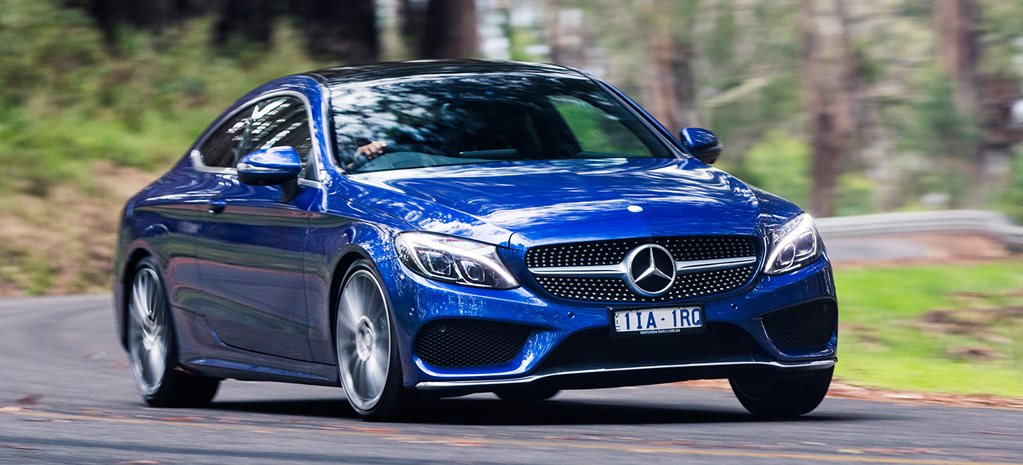
It also brought the revised powertrains including the C200’s 1.5-litre petrol engine with EQ boost mild hybrid. The hybrid C350 e was removed from the range.
The C300e plug-in hybrid was introduced in September 2019 along with the C200 Sport.
The C200d diesel was quietly deleted from the range in 2020.An all-new C-Class is due about 2021 or 2022.
I like this car, but I can’t choose which version. Can you help?
They’re all good on their own way.
We would recommend the C300 Estate as the best all-round version. The high-output 2.0-litre turbo petrol is the most rewarding of the engines, striking a brilliant balance of power and fuel economy. And the C300 adds some nice equipment to the feature set.
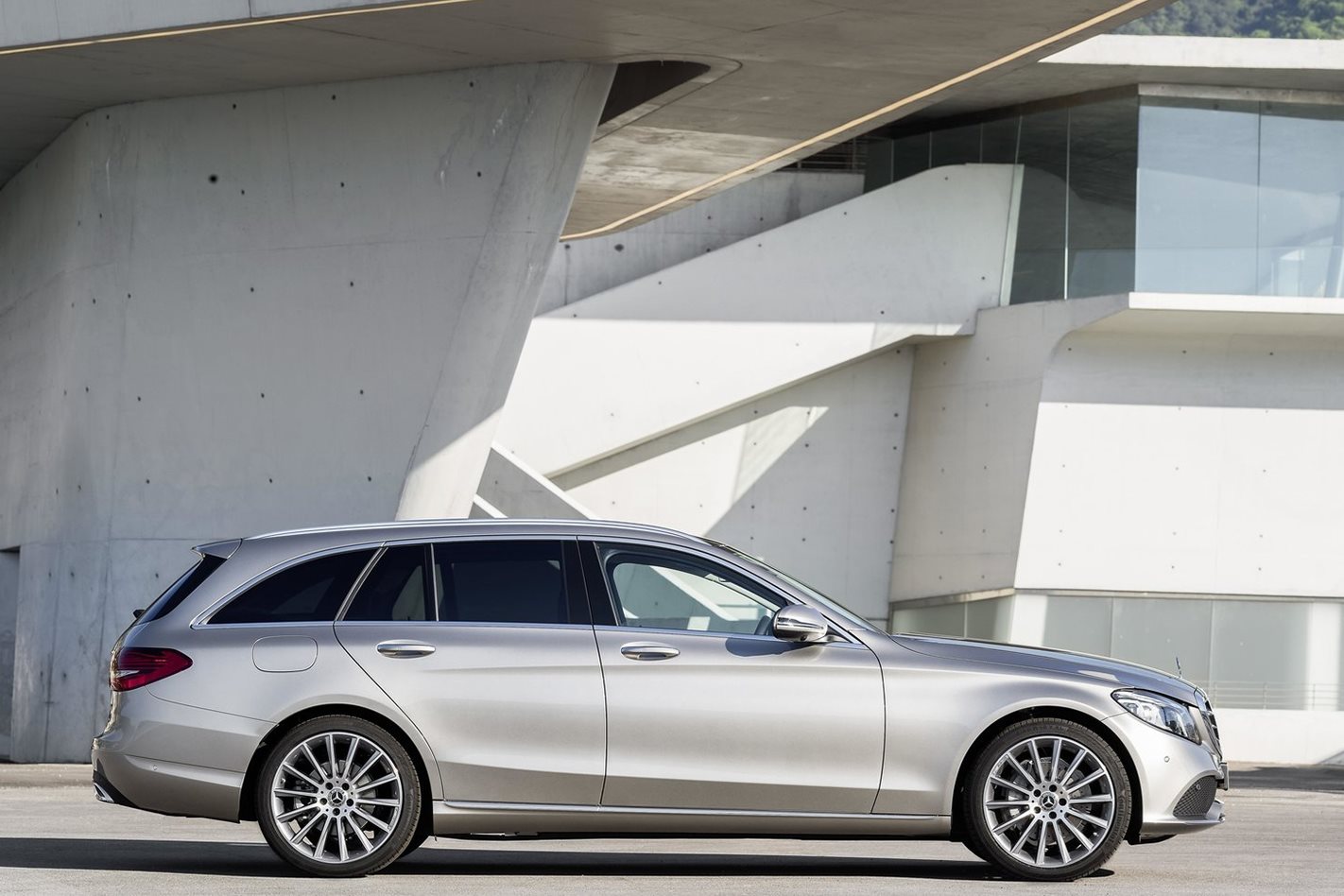
That said C300e Sedan benefits from an electric power boost and drives sublimely, while offering up to 55km of emissions free driving.If you can handle the extra cost of the Airmatic suspension option – about $2000 – it is well worth it for its superior ride.
Score breakdown
Things we like
- Great handling
- Superb powetrains
- Lovely cabin
Not so much
- Short rear seat base



